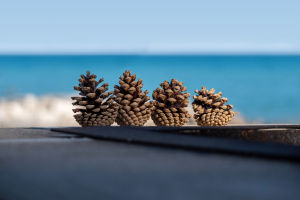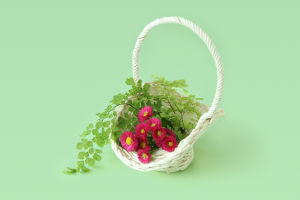
Hey Lykkers! When we think of bug-catching plants, most of us probably imagine the notorious Venus flytrap or the hanging, pitcher-like Nepenthes.
But today, we're going to introduce you to a lesser-known, yet equally fascinating species of carnivorous plant – the Sarracenia, specifically the beautiful Sarracenia leucophylla, also known as the white pitcher plant.
White Pitcher Plant: The Fairy of the Forest
Growing in the longleaf pine forests, the white pitcher plant is a real gem in the plant world. Its leaves are specially designed to catch insects, and they form tall, funnel-shaped pitchers. But what sets this plant apart is its distinctive appearance – its upper section features a stunning white and red contrast, with long, elegant pitcher bodies covered in veins of deep red. This striking design makes it stand out even in dense vegetation.
The white pitcher plant can grow to nearly a meter tall, with a graceful, wavy-edged cap that crowns each pitcher. It can easily become the star of the forest. Interestingly, there are even albino variants of this plant that are almost completely white, giving them a mystical "fairy-like" appearance that catches everyone's eye.
The Growing Cycle: Slow and Steady
White pitcher plants have a relatively long growing cycle, typically taking 3 to 5 years to grow from seed to a mature plant. Its flowering season is in spring, with large red flowers that hang upside down from tall flower stems. To prevent pollinators, like bees, from falling into its traps, the plant's flowers bloom either before or alongside the first pitchers, with the flower stems standing significantly taller than the pitchers.
Interestingly, the flowers are designed to ensure that pollinators enter in a specific order, which improves the plant's pollination efficiency. The seeds have a waxy outer coating, which helps them spread across wetlands when water carries them away. They require a period of cold stratification before they can germinate, and the new plants immediately develop their insect-catching pitchers.
How the White Pitcher Plant Catches Insects
While it doesn't have the Venus flytrap's powerful jaws or the sticky traps of sundews, the white pitcher plant's hunting method is just as effective. The plant's pitcher is designed in a similar way to the Nepenthes, with a large, funnel-like shape. This pitcher has several distinct areas, including the lid, the peristome (the rim), the waxy body, and the digestive base.
The lid of the pitcher contains downwards-pointing hairs and nectar-producing glands, luring insects with the promise of a delicious treat. Once an insect lands to feed, it finds itself with little to no place to stand, and as it tries to get closer to the nectar, it inevitably falls into the pitcher.
The peristome is lined with tiny, slippery structures, making it difficult for insects to cling onto, while the nectar further entices them. Surprisingly, the nectar may actually be toxic – it contains a substance that can paralyze the insects, similar to the poison that killed Socrates, forcing them to fall into the trap.
Once the insect falls inside, escape is nearly impossible. The interior walls of the pitcher are smooth and waxy, preventing any attempts at climbing back out. The base of the pitcher contains downward-pointing hairs, further ensuring the prey remains trapped. Digestive enzymes at the base of the pitcher help break down the insect, and the plant absorbs the nutrients, leaving behind only the insect's remains.
What Happens If It Doesn't Catch Bugs?
You might be wondering, what happens if the plant doesn't catch any bugs? Will it starve? The answer is no!
When insects are scarce, especially toward the end of the growing season, the white pitcher plant will grow non-carnivorous leaves known as "phyllodia." These leaves are designed to perform photosynthesis, providing the plant with the energy it needs to survive even when it's not catching bugs.
A Carnivorous Plant's Hidden Helpers
Interestingly, the white pitcher plant doesn't only attract insects. It also draws in predators like the cat-faced spider (Peucetia spp.) and crab spiders (Misumena spp.), which often lurk inside the pitchers. When an insect falls into the pitcher, these spiders swoop in and capture it before the plant can get a meal.
In return, the spiders leave behind their leftovers inside the pitcher, helping the plant with additional food. This symbiotic relationship increases the plant's success in catching prey. It's truly a win-win situation for both.
Nature's Enemies: The Moth That Outsmarts the Pitcher
But the white pitcher plant has its enemies too, particularly from the insect world. The "white pitcher plant killer" moth (Exrya semicrocea) is known to prey on the plant. Unlike most insects that fall victim to the pitcher's traps, this moth has evolved to move freely inside the pitcher without falling into the digestive base. It feeds on the nectar and lays its eggs inside the pitcher. The larvae then eat through the plant's tissue, often destroying the pitcher completely.
While the moth has been devastating to the plant population, it is also facing decline due to the rapid disappearance of its host plant, the white pitcher plant.
The Plant's Role in Weddings
One of the most unexpected consequences of the white pitcher plant's stunning appearance is its rise in popularity in the wedding industry. People have begun using the plant's beautiful pitchers as part of bridal bouquets. These delicate, bug-catching flowers have become a sought-after item for weddings.
However, the increased demand has led to a sharp decline in the wild population of the white pitcher plant. It's now listed as "vulnerable" by the International Union for Conservation of Nature (IUCN). But there's hope! Conservation efforts are underway to protect its natural habitat and ensure this beautiful plant doesn't become extinct.
The Future of the White Pitcher Plant
Despite its growing popularity in the floral industry, the white pitcher plant remains an incredible and vital part of nature. Thankfully, with increasing awareness and conservation efforts, we hope that this magical plant can continue to thrive in the wild for generations to come.
Have you ever seen a white pitcher plant in person, Lykkers? Share your thoughts or experiences with us! Let's help protect these incredible plants!


